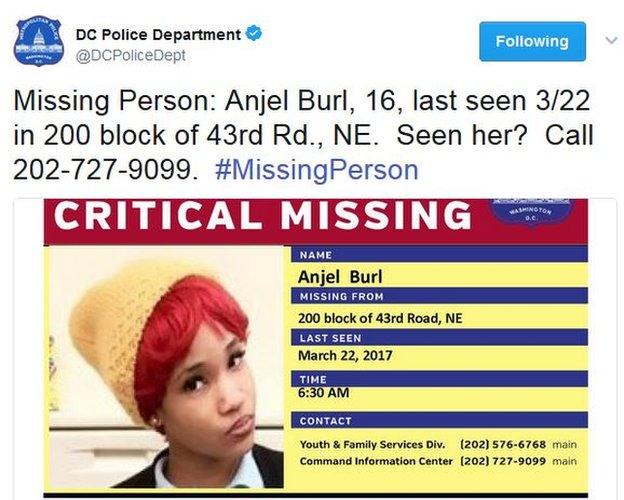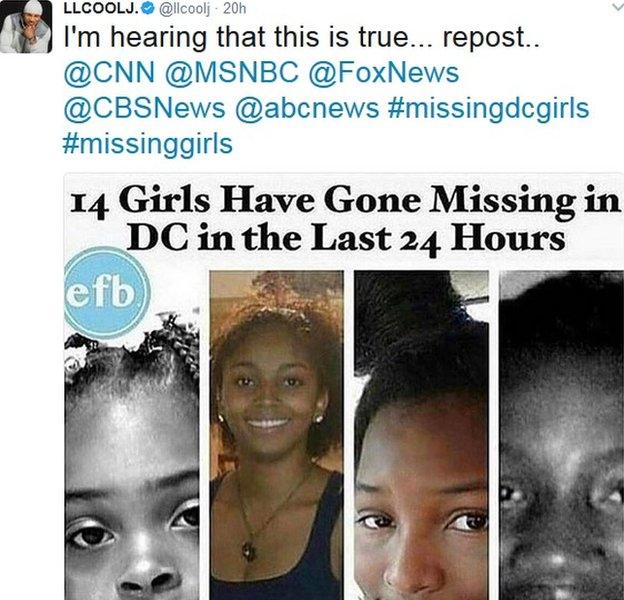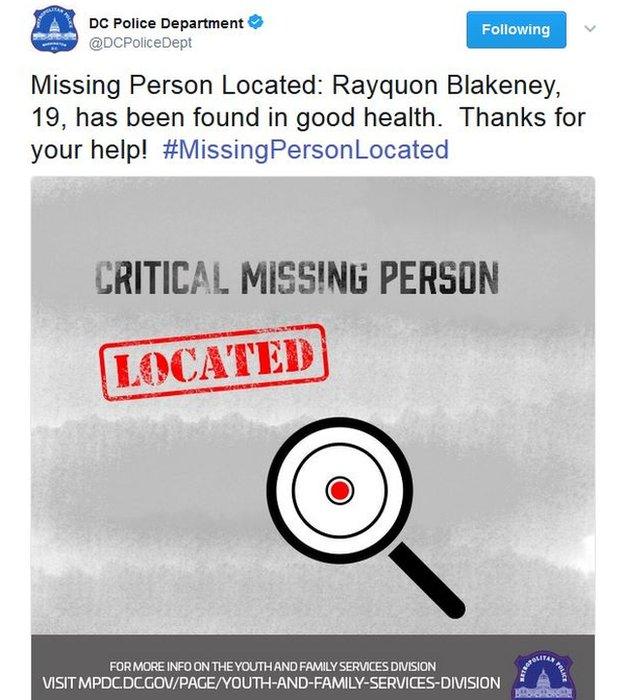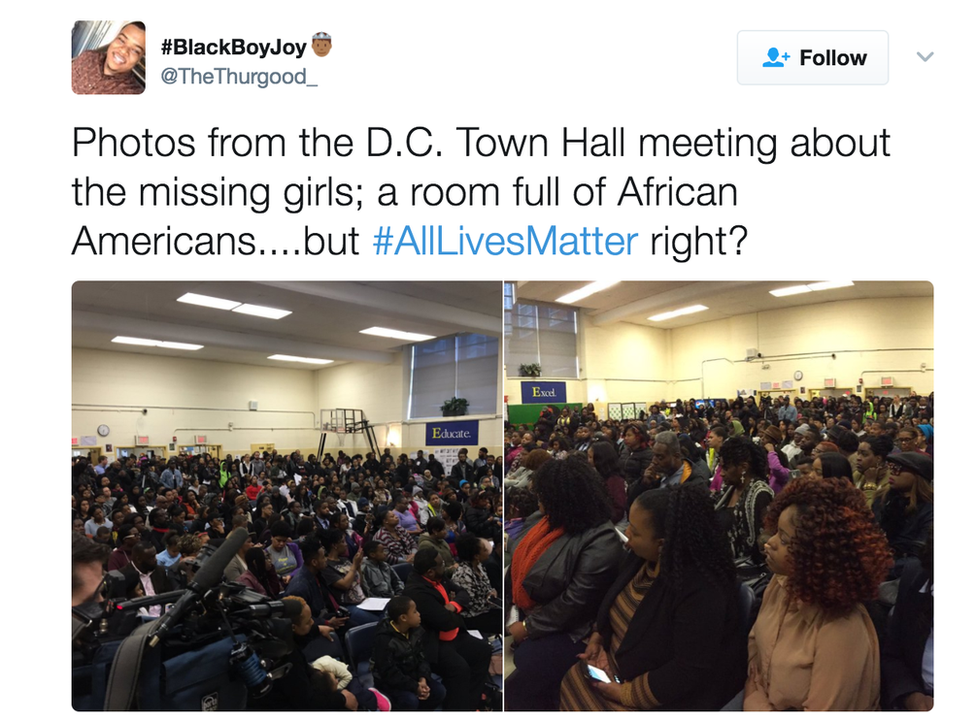Are Washington girls really going missing?
- Published

A recent missing person tweet from Metro Police Department's twitter account
The Washington, DC Metro Police Department's Twitter feed suggests an epidemic of missing children. But are young girls really disappearing from the streets of DC at a high rate?
Metro Police Department (MPD) has always shared some missing persons on social media, but early this year the new police commander decided to use Twitter for every critical case.
"If more people in the public are aware, then that's more eyes on the road for us," said Alaina Gertz, a spokesperson for the department.
Since then, the faces behind the nearly 200 people - many of them children, many of them female - who go missing each month have loomed large on social media.
Many see the missing person tweets but often miss the follow-up tweets once someone has been found, says Gertz.
The result is a sense that girls in DC are going missing at an alarming rate - and that no one is paying attention.

Photos of girls who have already been found are still circulating
A recent social media post claimed, incorrectly, that 14 girls had gone missing this week alone.
Soon the hashtags #findmysisters and #MissingDCgirls were circulating.
"If 14 white suburban teenage girls from Long Island went missing you think @CNN or @FoxNews would report it?" tweeted the singer Richard Marx.
"The #1 story in America should be 14 Black and Brown girls missing in DC. What is going on?!" wrote politician Baraki Sellers, external.
The outcry led Trayon White, a member of Washington DC City Council, to host a crowded town hall meeting on Wednesday.
On Thursday, Congressional Black Caucus chairman Cedric Richmond and DC Delegate Eleanor Holmes Norton sent a letter to the US Justice Department and Federal Bureau of Investigation, asking directors Jeff Sessions and James Comey to dedicate resources to investigate the number of missing children in the District.
But the MPD says there is no uptick in missing girls - and most of those who have gone missing in 2017 have been found quickly.

In fact, the numbers have gone down slightly, from an average of 200 missing cases each month in 2016 to 190 in 2017.
Most of the cases have been closed within 24 to 48 hours. The vast majority of the 501 cases involving missing children opened this year have already been closed, and many of the missing children were attempted runaways.
Twenty-two people under 21 are currently missing in DC. That count routinely changes as police find missing children and as new cases are filed.
"We have no indication to believe young girls in the District are being preyed upon by human traffickers in large numbers," Commander Chanel Dickerson said at a news conference on 16 March.
The spectre of missing children, especially young black and Latina girls, has cast a dark shadow over Washington, DC.
In March 2014, an eight-year-old girl named Relisha Rudd disappeared from the city's largest family homeless shelter, DC General. Video footage later surfaced that showed a janitor taking the girl from the shelter on the last day she was seen alive.
The man killed himself and his wife. Relisha is still missing.

Nationally, black girls do make up a disproportionate number of missing children's cases. The gap between the realities of missing children and the public's understanding of those cases can be frustrating for police.
Children who run away from home make up a majority of missing cases in the District, and more needs to be done to help them, Cmdr Dickerson said.
"It is heartbreaking to see the number of our young people in our city who leave home because they believe there are no other alternatives," Dickerson said.
"I want to let them know that they are valuable assets to our community and we have not counted them out or written them off, we are here to help."
Despite reassurances that the number of missing children is within the norm for DC, Mayor Muriel Bowser, external on Friday that the city will dedicate more money and MPD officers to finding missing children, and to providing resources for them and their families once they are found.